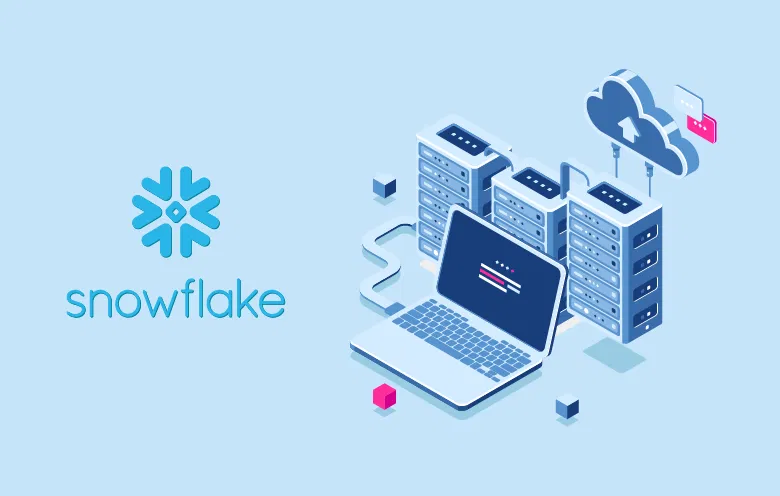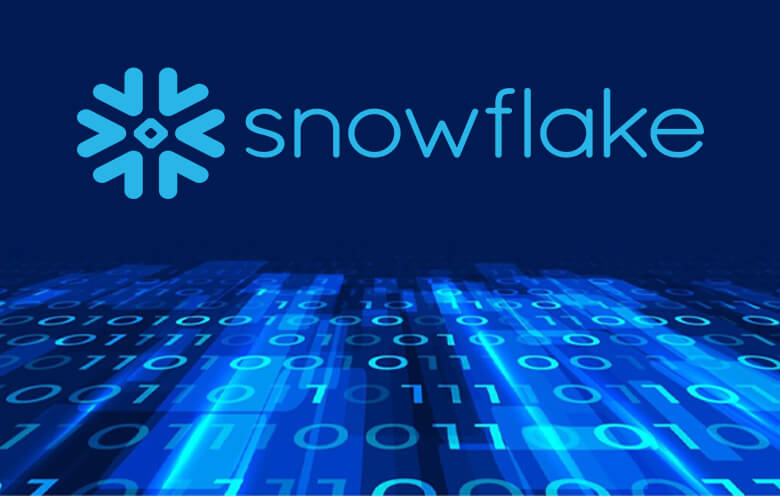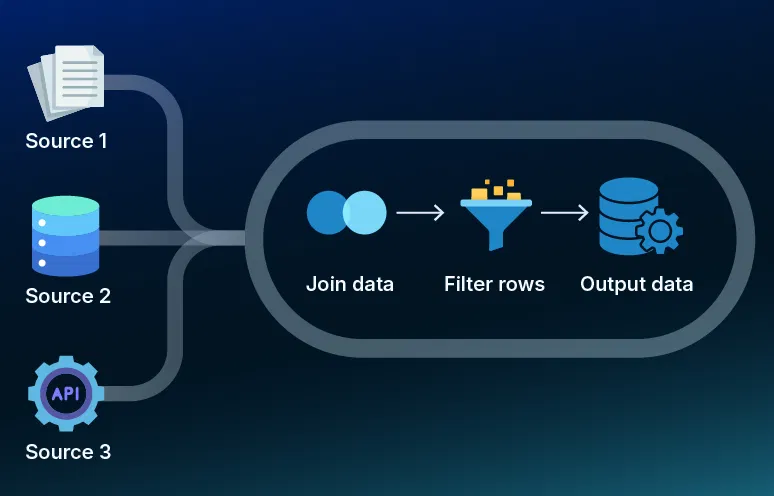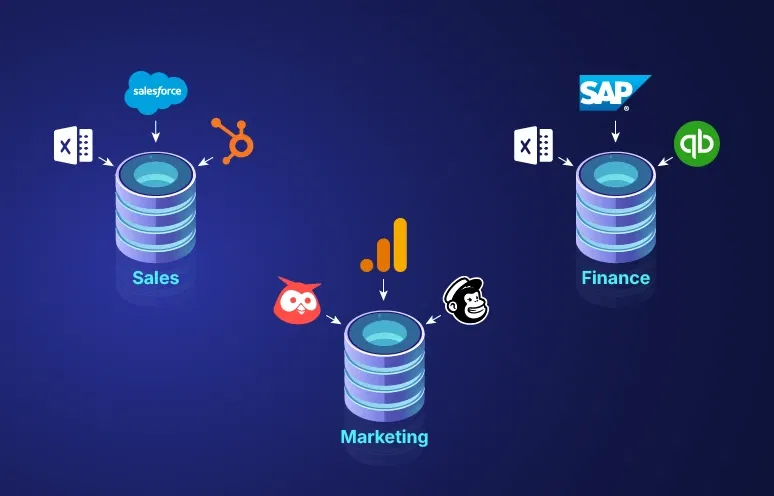Conventional data warehousing stands well until one tries to upload and query data concurrently, brings complexity to queries, phones multiple sources of data, or even when there is little modification of the system. These disadvantages then give rise to problems regarding inefficiencies that produce a weak link in the industrial chain which cannot be tolerated.
Snowflake clustering alleviates these worries by providing data warehouse solutions that is expandable, fast, and scalable. Snowflake is a hardware system for the overall data environment of an organization regarding data collection, storage, processing and movement. Next, we will study how its structure is very compliant.
Snowflake architecture
Snowflake is a Software-as-a-Service (SaaS) tool, more precisely an online-based warehouse that offers data storage through the cloud. In this regard, it is nearly automatic and not labor consuming because of its simple and economical installment. Snowflake database provides a step-up from the traditional star schema table that connects dimensionally. The star schema that feeds into the multidimensional Snowflake architecture is literally reminiscent of a snowflake.

Source:Snowflake Inc.
Snowflake provides a wide range of capabilities empowering its customers to define their own batch and continuous pipelines in any programming language. In addition, the data can be parsed either in small lot or forking style either incrementally or in bulk. As a result, Snowflake’s features are very flexible allowing users to perform diverse functionality with ease.
To brainstorm how it works, one must first look at Snowflake data warehouse architecture. It functions through three layers:
- Cloud services layer – the surface layer that we all can see is used to build our cell phones and computers.
- Compute layer – that is, query processing.
- Database storage – the central layer of the deepest point of the octahedron
Cloud services layer
- Centralized management: The cloud services layer acts as the conductor, overseeing and managing all aspects of the data warehouse.
- Integrated functionality: It provides a comprehensive suite of features for infrastructure management, access control, data sharing, metadata management, security, authentication, and query optimization.
- Exceptional data sharing: Snowflake excels in data sharing capabilities compared to traditional data warehouses.
- Decoupled storage and compute: Separation of storage and compute allows Snowflake to grant access to data clones (references) instead of the actual data, enhancing security and efficiency.
- In-House caching system: Snowflake utilizes two disk caches:
- Metadata cache: Stores information about tables, including size, references, structure, partitions, etc.
- Result cache: Stores results of recently executed queries for a 24-hour period. Subsequent queries for the same data can retrieve results from the cache, improving performance.
Compute layer
- Virtual warehouses: The compute layer utilizes virtual warehouses for parallel processing and efficient query execution.
- Departmental warehouses: Each department can create and manage its own virtual warehouse to store and analyze relevant data.
- Full data lifecycle support: The compute layer handles the entire data warehouse lifecycle, from running queries to delivering results.
- Raw data cache: A cloud-based raw data cache stores recently accessed data for faster retrieval.
- Scalable storage and warehouses: Snowflake allows users to scale storage size and virtual warehouse size independently.
- Multiple warehouse sizes: Snowflake offers a range of virtual warehouse sizes, from X-Small to 5X-Large and beyond.
- Server scaling based on usage: The number of servers in a virtual warehouse scale with workload, similar to how an airline scales servers based on flight volume (e.g., X-Small uses a minimum of one server, while 3X-Large can accommodate 64).
- Cost Implications of Larger warehouses: While scaling offers flexibility, larger virtual warehouses come with increased costs.
- Multi-cluster architecture: Multi-clustering in Snowflake architecture allows horizontal scaling by adding more clusters instead of just increasing server count within a single cluster.
- Built-in scalability: Snowflake’s architecture automatically scales to meet increasing demands, preventing concurrency issues and system crashes.
Storage layer
- Raw data storage: The data is stored by snowflake in its original form, which means it is not processed but keeps its integrity.
- Hybrid columnar structure: Data is put in a tie-up of rows and columns to make query outcomes faster. Questions that authorize selected columns, rather than all columns, can directly scan and thus eliminate the necessity to scan entire rows.
- Separation of storage and compute: Data storage is independent of compute resources, enabling independent scaling of each layer.
- Non-disruptive scalability: Such an extension makes it possible to grow the current space without transferring elsewhere any data that may be already stored, which thus ensures smooth scaling.
- Concurrent data access: There are multiple users that can access information at the same time; this is helpful in avoiding data contention and bottlenecks that are a result of just one person using the data.
- Consistent storage layer: Distinctly, this is because if the user makes a batch output request, the operations interface doesn’t get separated from the storage.
- Tracking, and audit trails: This ensures data integrity, regulatory compliance, and maximizes the trustworthiness of your data insights.
- Streamlined Data Sharing: Break down data silos not just internally, but externally as well. Snowflake facilitates secure and governed data sharing with partners and vendors.
Benefits of Snowflake data architecture
- Empowered analysts: Then analysts will be empowered by the high-speed computing platform to process plentiful analyzes in a quick and effective manner.
- Improved collaboration: Take apart the data barriers and bring people together from all the sectors. Everybody may do with the data that will help to make a decision-making process better–facilitated.
- Faster time to insights: Alongside concurrent processing and automatic scaling, it takes less time for valuable insights be brought into existence, which in turn, facilitates decision making for the present.
- Enhanced data governance: Snowflake enables organizations to establish foolproof data governance mechanisms and policies.
- Streamlined data sharing: Apart from internal information exchange between departments but also external between different departments.
Conclusion
It is given that the traditional data warehouse often struggles to keep pace and Snowflake offers a valuable approach built for scalability, agility, and security. Snowflake doesn’t just manage your data; it transfers into a strategic asset. This is where you’d need Snowflake consulting services to keep your business afloat. At Softweb Solutions, we have expertise in this field, so if you have something in mind, reach out to us and get the ball rolling.



